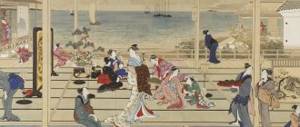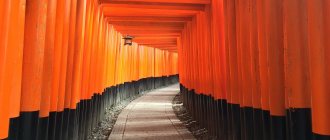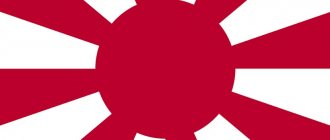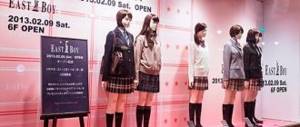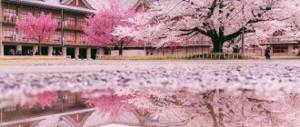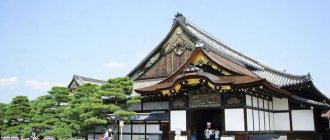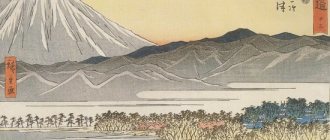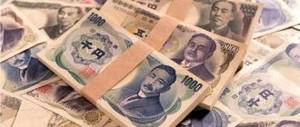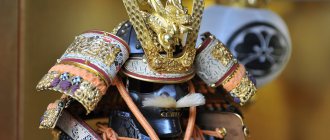The ancient capital of Japan - the Japanese have two of them, Kyoto and Nara - two great cities that are guardians of priceless cultural and historical heritage. These two cities were able to carry the true image and flavor of the land of the Rising Sun for many centuries. That is why those who want to get acquainted with a real ancient state should go to these outbacks.
The city of Nara is the oldest Japanese capital
Nara is also one of several former capitals of Japan, but it is the only city that has managed to retain almost its original appearance. It is in Nara that there are numerous monasteries and temples, which are treasuries of ancient relics and shrines. Only here can you feel the spirit of early Buddhism, since in Korea or China very scattered exhibits have been preserved, which allow you to get only a collective impression.
Situated on a plain, Nara is quite extensive, but compared to Kyoto or Osaka, it is still not that large. The central part of the city is a vast park with a museum, which stretches between two great monasteries - Todaiji and Kofukuji. The most ancient monasteries are located in the western part of Nara.
In the mid-730s, Japan was hit by a wave of crop failures, epidemics and uprisings, which served as the basis for the repeated transfer of the capital. At that time, Emperor Shomu issued a decree on the construction of numerous Buddhist temples, and also initiated the construction of a majestic bronze statue of Buddha in the city of Nara. It became the center around which the Great Eastern Monastery (Todaiji) was later built. A little later, the emperor declared himself a slave of Buddha and entered a monastery. Of course, the temple complex has undergone numerous changes throughout its existence. However, to this day, that greatness and power has been preserved, which eloquently testifies to the former times of the Land of the Rising Sun.
The reverent attitude towards deer deserves special attention - this city has a whole park where a huge number of these animals live. Why did such an attitude arise towards these spotted beauties? The thing is that one of the 4 guardian gods of Nara arrived here on a deer. Since then, the sika (sika deer) has become a symbol of the city. Medieval law states that it is forbidden to kill this animal under penalty of death. Now tourists can enjoy the company of these animals by visiting the first capital of Japan.
Entertainment in Osaka
Osaka is a city that keeps up with the times. There are many shopping centers, parks, aquariums and cinemas here. It seems to be a paradise for children and active adults.
Let's look at the most interesting places in the city:
- USJ (Universal Studios Japan) is a classic park of the Universal world, located in Japan. On the territory of the park, which is no less than 54 hectares, there are dozens of shops and stalls, and more than 20 complex attractions; the entire park is divided into thematic sectors.
Visitors to the park can feel the atmosphere of their favorite movie in reality, and feel like an active participant in these adventures, such as: “Jurassic Park”, “Jaws”, “Back to the Future”, “Spider-Man” (I love this attraction) and others. After all, all conditions have been created for this, including 4D effects based on the latest technologies, as a result of which you will get great pleasure and a lot of impressions!
By the way, in July 2014, another interesting attraction appeared here, or rather an entire thematic sector, “The World of Harry Potter,” with attractions, shops and benches. An absolutely amazing place, everything is done here just as we saw in the first episodes of the famous film (pictured above). The place is truly amazing! The only negative is the huge number of tourists not only from Japan, but also from Asia and Europe. But in my opinion, it is still worth a visit, just like Tokyo Disneyland! It can't be helped, Universal Studios is the second most visited place in Japan (Disney World is in first place).
- Kaiyukan Aquarium is incredibly popular among tourists, so to avoid standing in line at the ticket office, order tickets in advance online. The abundance of marine life amazes and impresses both children and adults. You can even touch some of the inhabitants. The complex is located thoughtfully, so when you are there, you will not notice the crowds and avoid the crowd.
- Osaka is home to a lot of museums, theaters and parks to suit every taste, each of which will interest the most grumpy tourist. In addition, while in the city you shouldn’t stay in hotels and hostels; by walking through the historical and business districts of the country, you can understand the atmosphere of the city and try an unusual but tasty traditional dish with octopus - takoyaki, which is considered to be the most delicious and original in Osaka .
Kyoto - the cultural capital of Japan
For 12 centuries, Kyoto was the capital of the Japanese state, as well as its cultural center. The Second World War did not affect this city much. It is thanks to this fact that Kyoto was able to preserve its unsurpassed flavor and atmosphere of ancient Japan. Ancient palaces and villas, ancient temples and shrines - all this harmoniously combines with small villages, which are comfortably located on the slopes surrounding the city itself.
Real geishas stroll through the old Gion quarter, and in the Kamigyo-ku area, skilled craftsmen still demonstrate ancient textile crafts. Numerous small shop owners and local craftsmen sacredly honor their ancient traditions and do everything possible to preserve Japanese culture.
Today everyone can visit the ancient capital of Japan - most tourists come here for a week. Only in this case can one appreciate all the beauty and grandeur of the ancient city.
Kyoto is not only the former capital of Japan. Despite the fact that this city is no longer the main political center of the country, Kyoto still remains an important cultural, economic and political region with a long history. Moreover, even the name itself speaks eloquently for itself - for example, the original name of the former capital (Heiankyo) literally translates as “capital of the world.” Kyoto was originally planned as the capital of the state. That is why there are so many temple complexes and majestic buildings that have become World Heritage Sites. The 11th century became the golden age for the history of Kyoto - it was at this time that unique masterpieces were created here, such as “The Tale of Genji” by Murasaki Shikibu, as well as the well-known “Notes at the Bedside” by Sei Senagon.
Nara period
This is the name of the era in the history of Japan when the capital was the city of Nara (from 710 to 794). Its features are the accelerated Sinicization of society, the flourishing of culture, in particular poetry and Buddhism, and the creation of the first Japanese historical chronicles.
Until the 8th century, the Japanese called their state Yamato. However, in 702 the toponym “Nihon” first appeared. Awata no Mahito, the Japanese ambassador who visited China, named his country that way. Before the adoption of the Taiho (basic legislative code) in 701, there was a custom after the death of the emperor to move the capital of the state to a new location. In the 8th century, the reform of Japanese society began. A centralized government was created with an effective administrative apparatus. As a result, the entire territory of Japan was united. All this required the creation of a large sedentary center. The first capital in 710 became this center.
Nara was a quadrangle, which was divided into left and right “capitals”. In addition, the city was divided into dozens of small districts. Government buildings were concentrated in the northern part of Nara. The emperor's palace was also located here. The city's main thoroughfare, known as Red Phoenix Street, extended from it. It reached the main gate located in the south.
Current capital of Japan
Tokyo has been the capital of Japan for 400 years. The original name of the city is Edo. The city flourished during the reign of Tokugawa Ieyasu. In the middle of the 18th century, Edo became the largest political, economic and cultural center, with a population of over 1 million people. At this time, the emperor's residence was located in Kyoto, a city that was officially considered the capital of Japan. However, in 1868, the emperor moved to Edo - since then the city has been renamed Tokyo and received the official status of the capital of the Land of the Rising Sun.
Japan is a country with an amazing culture and rich history. Each capital (both former and current) is a unique city that largely reflects the culture and history of the state. Of course, those who want to truly experience Japanese culture and its flavor should go on a trip to the ancient capitals, which can convey the atmosphere of ancient Japan.
Is it difficult to get to Osaka?
Not at all! The city is equipped with a major transport interchange and in addition to the railways, Osaka is served by two airports: Osaka and Kansai. Also, by train you can easily and conveniently get to Kyoto. So, when visiting Osaka, I think you will not have problems with trips and interesting activities.
Well, for now, it’s time to finish the article, and to summarize, I would like to say that Osaka is a city that fills visitors with wonderful and joyful impressions, and the climate and conditions for tourists allow them to take small children on a trip. I hope the article was useful to you, subscribe to my blog and recommend it to your friends. Have a nice rest!
Lika Raido
[collapse]
State Economy
The economy of this period was state-planned. A network of roads leading to the capital was built to more efficiently collect taxes. Thanks to her, the active development of Japan began. Silver and copper coins were minted at court. In 708, the first Japanese coins appeared. The money was used mainly to pay salaries to workers and officials. The bulk of the Japanese were outside the sphere of commodity-money circulation. 90% of the inhabitants were free peasants. The country's economy was natural.
City restoration
Restoring it turned out to be not so easy - many monuments were completely destroyed. And in order to recreate Suzakumon, the majestic red phoenix gate that is the main gate of the Nara Temple, even basic information was missing. It was not known for certain what they looked like. Therefore, the reconstruction was carried out on the basis of a model made as a result of excavations, comparison and analysis of the distances between columns and fragments that were discovered. In 1998 the gate was reconstructed. Today it is a majestic structure 25 m high. They are built of concrete and cypress. During their reconstruction, the seismological situation in the region was taken into account, and special technologies were used that allow the gate to stand for another 500 years.
Population of Japan during the Nara period
The Nara period in Japanese studies is seen as a continuation of the reforms begun in the 7th century. They were associated with the borrowing of China's civilizational experience. The population of the state, according to Russian researchers, was approximately 6 million people. The Japanese Empire at this time was already a centralized state. The population was divided into 2 categories: Ryomin (good people) and Semmin (mean people). Officials belonged to the first category (they were the elite of Japan at that time), as well as free community members and artisans who depended on the court. The semmin included grave guards, enslaved criminals and their families, and privately owned slaves. All officials, according to the legal codes of Japan in the 7th century, were divided into provincial and capital. Their position was fixed by a system of 9 ranks. In turn, they were divided into junior and senior ranks. The higher the position in this system the official occupied, the higher his salary, the more privileges and benefits he had.
The fate of Nara after the capital was moved
After Nara ceased to be the capital, its development stopped for some time. Many architectural monuments of the city during the period of internecine wars, which occurred so often in Japan and lasted for a very long time, were destroyed, since most of the buildings of that time were built of wood. The lands of the first capital began to be used for agricultural land. The once majestic city fell into complete decline. However, influential temples opposed this centuries later. Once again, Nara became the capital of shrines and temples in Japan.


